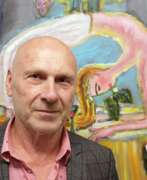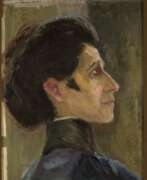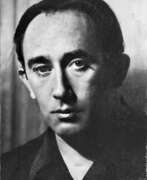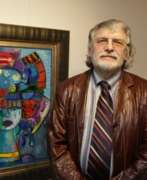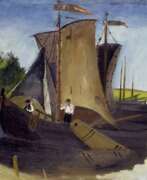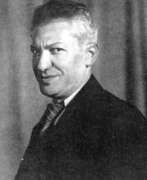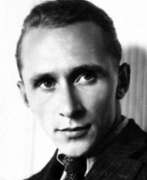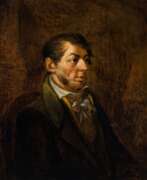Portrait Lithuania
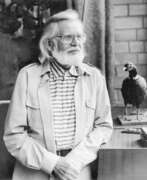

Jonas Čeponis was a Lithuanian painter and representative of the Fauvism movement.
Čeponis graduated from the Lithuanian Art Institute and the Vilnius Institute of Engineering Construction, and was a professor at the Lithuanian Art Institute. Influenced by Fauvism, the artist mainly painted expressive landscapes of Lithuanian villages and Vilnius. His paintings are characterized by decorative, contrasting color combinations. Čeponis also painted portraits, still lifes, figurative compositions and nudes.
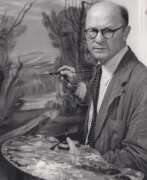

Adomas Galdikas was a Lithuanian painter, graphic artist, theatre artist and stage designer.
Adomas Galdikas painted landscapes, still lifes, portraits, abstract compositions. Author of prints, illustrated books. He created scenery for seventeen productions of the Kaunas State Theatre; among the most significant theatre works, apart from Kreve's Sharunas, is the opera Gražina by Jurgis Karnavičius (1933).
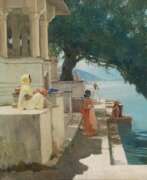



Tadeusz Groeski (Russian: Фаддей Антонович Горецкий) was a mid-nineteenth-century Russian and Polish artist. He is known as a painter and teacher.
Tadeusz Groeski created a number of historical and genre paintings, as well as portraits of Russian intellectuals, soldiers, Polish church figures, family members and friends. He also made skilful copies of paintings by famous Italian and Spanish masters. His artistic legacy also includes drawings-illustrations for classics of Polish literature.
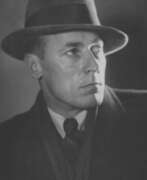

Jazep Mikhailovich Gorid (Russian: Язеп Михайлович Горид) was a Belarusian and Polish-Lithuanian artist of the first half of the twentieth century. He is known as a graphic artist and painter, caricaturist and illustrator.
Jazep Gorid drew political and everyday caricatures, painted portraits and landscapes. He also worked in book graphics, illustrated and designed books and other printed publications. In addition, the artist created stained-glass windows and murals.
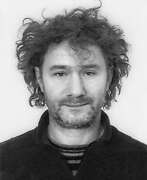

Kęstutis Grigaliūnas - Lithuanian graphic artist, art teacher. 1988-1989 created linen carvings, wood carvings, screen prints, etchings, illustrated books. Since 1990 one of the first Lithuanian graphic designers to use the color screen printing technique. Made a cut out of cardboard and plywood. It is characterized by a pronounced graphic beginning - lines, signs, ornaments, figurative and abstract motifs are used. Since 1998 creates more complex plastic graphic works and cut-outs, they feature postmodernism features, pop art, Fluxus elements, decorative, eclectic images. A playful mood, irony, and various intellectual references to the images of Lithuania and other cultures and civilizations prevail.
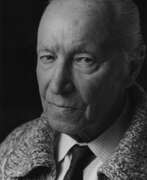

Antanas Gudaitis (Russian: Антанас Мартино Гудайтис), a Lithuanian painter born on July 29, 1904, in Šiauliai, and passing away on April 20, 1989, in Vilnius, was a pivotal figure in Lithuanian art, particularly noted for his contributions to modern expressionist and colorist painting. His studies spanned from the teacher's seminar in Šiauliai to literature at the University of Lithuania, and art at the Kaunas School of Art. Gudaitis further honed his skills in Paris at the National School of Decorative Arts and various private studios until 1933. His career as an educator included positions at the Vilnius Art School, Vilnius Art Academy, and the Vilnius Art Institute, where he was bestowed the title of professor in 1947. Gudaitis's recognition in the Lithuanian art scene was marked by honors such as the title of Meritorious Artist of the LSSR in 1961 and the laureate of the LSSR State Prize in 1965.
His body of work spans portraits, still lifes, and landscapes, showcasing a distinctive style that evolved from decorative and semi-abstract forms to more relief-rich and vibrant color palettes. Gudaitis's art reflects a deep engagement with Lithuanian moods and themes, often weaving intricate metaphors about contemporary life and human relationships. He was instrumental in the establishment of the Lithuanian modernist artist group "Ars" and remained an active member of the Lithuanian Artists' Union from 1935. His impact extended beyond his art, as he nurtured and influenced generations of students, imbuing them with a sense of creativity and resilience.
Antanas Gudaitis is celebrated for bringing avant-garde elements into the Lithuanian art scene and is recognized for his lyrical expressionism. His legacy is underscored by his ability to embody and impart the fundamental tenets of twentieth-century art—freedom, modernity, and national identity—despite the challenging socio-political landscapes of his time. Gudaitis's influence was profound, not just in his artworks, but in his dynamic role as a cultural figure, educator, and free spirit who endured dramatic circumstances without succumbing to them.
For art collectors and experts, Gudaitis's works offer a profound connection to the evolution of Lithuanian modern art, presenting opportunities to explore the rich textures, colors, and symbolic content that define his oeuvre. To stay updated on new product sales and auction events related to Antanas Gudaitis, signing up for updates is highly recommended, promising a gateway to the rich legacy and continued appreciation of his contributions to the art world.


Vasily Vasilyevich Mate (Russian: Василий Васильевич Матэ), birth name Wilhelm Johann Mathé, was a prominent Russian artist and engraver, made a significant mark in the art world during the late 19th century. Unlike many of his contemporaries who focused on poetry and painting, Vasily Mate specialized in the art of engraving, establishing himself as one of Russia's leading engravers.
Vasily Mate honed his skills at the Imperial Academy of Arts, where he later became a full member. His expertise in engraving set him apart in an era where Russian art was predominantly influenced by poetry and painting. Mate's collaboration with eminent Russian painters allowed him to produce engravings that captured the essence of their paintings, thereby playing a crucial role in popularizing Russian art.
Vasily Mate's engravings encompassed a range of subjects, including portraits of notable figures like Alexander Pushkin and Nikolai Gogol. His ability to intricately transcribe these subjects onto metal plates garnered admiration and respect, securing his legacy in the annals of Russian art history.
For art collectors and enthusiasts, Vasily Mate's works offer a glimpse into the rich cultural heritage of Russia. His engravings are not just artistic creations but historical artifacts that provide insight into the artistic endeavors of the late 19th century.
If you are keen on exploring more about Vasily Vasilyevich Mate and staying updated on sales and auction events related to his works, we invite you to sign up for our updates. This subscription will serve as your gateway to the fascinating world of Vasily Mate's engravings, ensuring you don't miss out on any opportunity to own a piece of Russian art history.
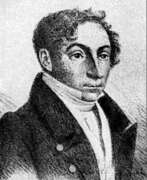

Józef Oleszkiewicz, a Polish-Lithuanian painter, was renowned for his contributions across Belarusian and Russian art scenes. Born in the late 18th century, Oleszkiewicz was celebrated for his masterful portraits and historical scenes, which were imbued with a distinctive blend of cultural influences that reflected his diverse heritage.
Oleszkiewicz's work is characterized by its meticulous detail and vibrant color palette, which set him apart from his contemporaries. His ability to capture the emotional depth and personality of his subjects made his portraits particularly revered. Among his notable works is the portrait of Adam Mickiewicz, a legendary figure in Polish literature, which is housed in the National Museum in Warsaw.
His career spanned various regions, leaving a significant mark on the art communities in Belarus and Russia as well. His influence is evident in the way he seamlessly integrated the artistic traditions of these cultures, making his works highly valuable not only for their aesthetic appeal but also for their cultural significance.
For collectors and experts in art and antiques, the work of Józef Oleszkiewicz offers a unique glimpse into the historical and cultural tapestry of Eastern Europe. His paintings are not just artistic expressions but are also historical documents that provide insight into the era's societal values and aesthetics.
To stay updated on exhibitions and auction events featuring works by Józef Oleszkiewicz, sign up for our newsletter. Ensure you never miss an opportunity to view or own a piece of this illustrious artist's legacy.
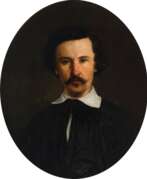

Edward Pawłowicz was a Polish-Lithuanian-Belarusian artist of the second half of the nineteenth and early twentieth centuries. He is known as a painter and graphic artist, public figure, memoirist and educator.
As an artist, Edward Pawłowicz painted portraits and landscapes in a style that critics define as transitional from classicism to romanticism. He also wrote several books of memoirs.


Yehuda Pen (Russian: Юдель Моисеевич Пэн) was a Jewish-Belarusian artist-painter and teacher, recognized for his pivotal role in the Jewish Renaissance in Russian and Belarusian art at the start of the 20th century. Born on May 24, 1854, in Novoalexandrovsk (now Zarasai, Lithuania), Pen emerged as a significant figure, arguably paralleling Mark Antokolski's impact in sculpture. After moving to Vitebsk in 1891, Pen established the first Jewish art school in Belarus, offering training to many, including Marc Chagall, Ossip Zadkine, and El Lissitzky, who could not afford or gain admission to larger academies.
Pen's life was tragically cut short when he was murdered at his home in Vitebsk on the night of February 28/March 1, 1937, under unclear circumstances. His legacy, however, lives on through his works, primarily housed in Belarusian museums, including the Vitebsk Museum of Modern Art and the Belarusian National Arts Museum. Notable works include "Letter from America" (1903), "Old Tailor" (1910), and "Self-portrait with Muse and Death" (1925), showcasing his mastery in portraying everyday life and Jewish cultural themes.
Art collectors and enthusiasts keen on exploring the depths of Jewish art's evolution in the early 20th century would find Pen's work both intriguing and enriching. To stay updated on exhibitions and sales featuring Yehuda Pen's art, signing up for updates is highly recommended. This subscription will alert subscribers to new product sales and auction events related to Yehuda Pen, ensuring they don't miss out on owning a piece of history.
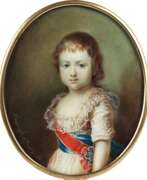

Aloys-Gustav Rockstuhl (Russian: Алоизий Петрович Рокштуль) was a mid-nineteenth-century Russian artist of Baltic-German origin. He is known as a hereditary miniaturist painter, portrait painter, draftsman, and lithographer.
Aloys-Gustav Rockstuhl had the title of court painter. Almost all of his work consisted of creating miniatures for the Imperial couple - Russian and foreign. The artist painted many portraits of Russian emperors and members of the imperial family.
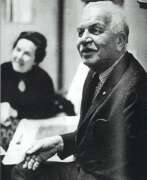

Benjamin Shahn, also known as Ben (Ben / Benjamin Shahn) — Lithuanian-born American artist and photographer. He combined a decorative style of imagery with poignant social themes in his works and is considered one of the most prominent critical artists in the United States. His photographs made him famous as a chronicler of life in New York's working-class and black Southern American communities, as well as the slums of big cities. Many of his street photographs were later used in his paintings and wall panels. He also used newspaper photographs in his work.
Shan's work can be found in many US museums, including the Wichita Museum of Art.


Wincenty Sleńdziński (Russian: Викентий Александрович Слендзинский) was a Polish-Lithuanian and Russian painter of the second half of the 19th and early 20th centuries. He is known as a painter and pianist.
Wincenty Sleńdzinski created portraits, landscapes and genre paintings. A special place in his work was occupied by the religious genre, the artist painted churches in Moscow and Lithuania.
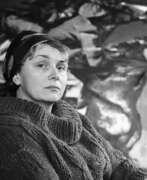

Sofija Veiveryte (Russian: София Мотиевна Вейверите) was a Lithuanian and Soviet artist of the second half of the twentieth and early twenty-first centuries. She is known as a painter, graphic artist, master of frescoes, and teacher.
Sofija Veiveryte created works characterized by monumentality, expressiveness, ability to work with tones and halftones. Her portraits show the influence of the old Renaissance and Baroque masters. Her works are kept in various museums, including the Tretyakov Gallery, the Pushkin Museum of Fine Arts, the Sofia National Gallery (Bulgaria) and the Lithuanian Museum of Theater, Music and Cinema, as well as in private collections.
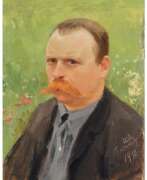

Ivan Alexeyevich Vladimirov (Russian: Иван Алексеевич Владимиров) was a Russian painter and graphic artist, known for his vivid and often stark depictions of the Russian Revolution and its aftermath. Born on January 10, 1870, in Vilnius, Vladimirov became a prominent war artist, documenting the turbulent events of early 20th-century Russia through his art.
Vladimirov's artistic journey began with formal studies at the Vilna Drawing School and later at the St. Petersburg Academy of Arts. His early works focused on battle scenes and everyday life, showcasing his realistic style and attention to detail. During the Russo-Japanese War and World War I, he served as an artist-correspondent, capturing the brutal realities of war.
His most notable works were created during and after the Russian Revolution. Paintings like "On the Streets of Petrograd" and "Hungry Times in Petrograd" portray the harsh conditions and social upheaval of the era. Vladimirov's art provides a critical lens on the revolution, illustrating both the triumphs and tragedies of the period. His works are housed in various collections, including the Williamson Art Gallery & Museum.
To stay updated on new exhibitions and auction events related to Ivan Alexeyevich Vladimirov, sign up for our newsletter. You'll receive timely alerts on new product sales and special events related to this influential artist.
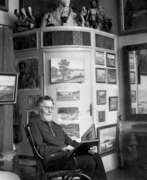

Antanas Žmuidzinavičius was a Lithuanian painter and art collector, celebrated for his significant contributions to Lithuanian art and culture. Educated at the Veiveriai Teachers' Seminary, he initially worked as a teacher while advancing his art education in Warsaw. Žmuidzinavičius's passion for art led him to Paris, where he studied at prestigious institutions such as the Académie Colarossi, enhancing his painting and drawing skills.
During World War I and the interwar period, Žmuidzinavičius played an instrumental role in safeguarding Lithuanian art and culture. He was a pivotal figure in organizing art exhibitions, and he dedicated considerable efforts to the collection and preservation of artworks amid political turmoil. His commitment to art extended beyond creation; he was deeply involved in education, teaching drawing at the Kaunas Art School and influencing generations of artists.
One of Žmuidzinavičius's most enduring legacies is the Devils Museum in Kaunas, a unique institution dedicated to sculptures and carvings of devils from around the world. The museum, which started with Žmuidzinavičius's collection, has grown to house over 3,000 items, reflecting a wide range of cultural perspectives on the devil. This museum not only showcases Žmuidzinavičius's fascination with folklore and mythology but also serves as a testament to his broad interests and contributions to Lithuanian heritage.
Antanas Žmuidzinavičius's work and his Devils Museum continue to captivate visitors, offering insights into Lithuanian culture, history, and art. For those intrigued by his life, contributions, and the unique devil collection, the Devils Museum in Kaunas is a must-visit, embodying the spirit of one of Lithuania's most notable artists.
For collectors and experts in art and antiques, the legacy of Antanas Žmuidzinavičius provides a fascinating glimpse into the rich cultural tapestry of Lithuania. Sign up for updates to stay informed on new product sales and auction events related to the incredible work of Antanas Žmuidzinavičius and to explore the depth of Lithuanian art and history further.
